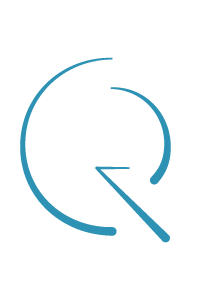Hechen Ren
“One of the things I love about physics is when it works. As a researcher, you slowly acquire a trained appreciation for when things work. You start with a curiosity about a subject that is born out of ignorance, and then with most things, as you learn, the itch gets scratched, and you feel satisfied. For really interesting matters, however, your curiosity thrives as your knowledge grows, so you keep digging deeper, and the pursuit becomes a self-driving interest. Physics for me is one of the latter kind.”
Center for Joint Quantum Studies, Tianjin University
IQIM Postdoctoral Scholar Alumna, 2019
Interview
My current work is a continuation from my PhD where I studied combining topological materials with superconductivity with potential applications to fault-tolerant quantum computing. Quantum computing includes both classical noise and quantum noise along two axes, and error correction gets a lot more loaded, so we want to figure out how we can protect our cubits from unwanted noise.
The condensed matter community wants to construct an emergent particle know as a Majorana fermion. Currently these particles are proposed by theorists, but once we create the environment where they emerge, we will be able to manipulate them and eventually do logic gates. Marjoana fermions are made of electrons, but you need to have electrons with special interactions. As an experimentalist, I work to construct materials to create the special environment where this particle emerges. Our work combines superconductors with some system that is spinless. A ferromagnetic environment is one place to look for these particles, but that is hard because ferromagnetism competes with superconductivity, so we look at systems with strong spin-orbit couplings.
All of the Majorana fermion searching used to be in 1D systems like nanowires or an atom chain, but recently we’ve realized that you can do this in 2D systems, which really opens up the opportunities. People keep discovering new 2D systems because it’s a very exciting field right now. These systems are wonderful for research because they are robust, and you can mass-produce them.
In our fridge, we do electrical measurements in high magnetic fields at very low temperatures, as low as 10 millikelvins, because quantum states need to be resolved with sufficiently low noise.
Our lab also does scanning tunneling microscopy (STM). When you have competing phases of matter, the competing phases can create order parameters that oscillate in space, which we can potentially observe with a scanning probe of spectroscopy. With STM, the surface has to be atomically clean, and you cannot have a large height difference. STM is very picky about the process your device sees, which is why it is a very ambitious project, but the payoff is also very promising. With STM, you can search an inhomogeneous system with the tip of the probe and see where you have an ideal environment for the particle and where you do not. STM is really as much a measurement tool as it is a diagnostic tool.
Exploring novel materials with the grand goal of topological superconducting in mind is exciting, and while applying the research in topological quantum computing is a goal, I think the physics is richer than that. This research is a very good excuse to learn a lot about new materials. People study a lot of materials with the hope that they are topological in nature, but then in their research, they learn more fascinating things about the materials. Thinking about clever ways to do quantum computing that are more energy efficient intrigues me. These new ways are clever because you can braid particles around each other and create a memory with the braiding, and the scaling is totally awesome compared to conventional computing.
I decided to go into physics as an undergrad because of Philip Kim, who was then a professor at Columbia. I was looking for a summer research opportunity, and because he was one of the founding fathers of graphene research, I joined the Kim group. I had the opportunity to work with Andrea Young and Cory Dean who are both renowned faculty in condensed matter research now.
One of the things I love about physics is when it works. As a researcher, you slowly acquire a trained appreciation for when things work. You start with a curiosity about a subject that is born out of ignorance. For most things, as you learn about it, the itch gets scratched, and you feel satisfied. But for really interesting matters, your curiosity thrives as your knowledge grows, so you keep digging deeper, and the pursuit becomes a self-driving interest. Physics for me is one of the latter kind. And then you really get to know the art of experimentation, which is also amazing. If you do not know the art, then you cannot appreciate the work as much. This work is very specialized. It is both learning and getting frustrated, but after you get frustrated, you appreciate it more. You see how hard this work is, and then you appreciate when you can learn anything about any system given how many obstacles are on the road. And given that most experiments do fail, when you get something that works or teaches you something, you appreciate that.
Over time, you become more skilled at making your system teach you something, even when it is a failure. You get into something and the more you learn about it, the more it drags you into it. In physics, there is a test at the end of the day. Does this really describe this world and the universe that we live in? If it cannot be tested and if it cannot fail, there is no thrill when it works. It is only when something can fail, that you feel so happy when it succeeds.
